Two Old Testament Leaves from ‘Otto Ege Manuscript 14’ at Smith College
March 11, 2022 in Manuscript Studies
Two Leaves
from ‘Otto Ege Manuscript 14’
at Smith College
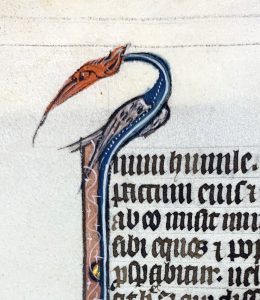
Smith College Special Collections, MS 36-6, verso, top left, from ‘Otto Ege MS 14’. Photography by Hannah Goeselt.
Large-format Latin Vulgate Lectern Bible
made in France
late 13th- or early 14th century
Single Leaf within a matted frame
Double columns of 50 lines
Exodus 25:31 (procedentia) – 28:21 (cela-[/buntur singuli])
with Ege Label
and
Ezekiel 16:43 ([irascar amplius /] eo quod) – 17:14 (sic reg/-num humile et])
[Posted on 12 March 2022.]
We warmly thank Hannah Goeselt, responding to our blogposts, for sending information and images for parts of ‘Otto Ege Manuscript 14’ at Smith College, Northampton, Massachusetts. The ‘moniker’ for the manuscript derives from the decisive impact upon it effected by Otto F. Ege (1888–1951) and the place-number which its selected specimen leaves occupied in his monumental Portfolio of Fifty Original Leaves from Medieval Manuscripts, Western Europe, XIII–XVI Century, issued in forty numbered sets. Ege assigned the date of “1300 A. D.” to the Bible and its specimens.
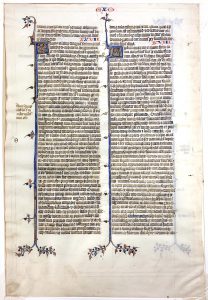
Smith College Special Collections, MS 35-14, verso, from ‘Otto Ege MS 14’. Photography by Hannah Goeselt.
Discoveries for other parts of this dismembered and dispersed manuscript, a large-format Lectern Bible in the Latin Vulgate Version in Gothic Script, with historiated and decorated elements, have been reported in our blog.
- A New Leaf from ‘Otto Ege Manuscript 14’
- More Discoveries for ‘Otto Ege Manuscript 14’
- A Leaf from ‘Otto Ege Manuscript 19’ and Ege’s Workshop Practices
- Updates for Some ‘Otto Ege Manuscripts’ (Ege MSS 8, 14, 41, and 61)
- Some Leaves in Set 1 of ‘Ege’s FOL Portfolio’ (Ege MSS 8, 14, 19, and 41)
- Patch Work in ‘Otto Ege Manuscript 14’
- A Leaf in Dallas from ‘Otto Ege Manuscript 14’.
- A Leaf of Deuteronomy from ‘Otto Ege Manuscript 14’ in the Rosenbrook Collection
See also The Illustrated Handlist (Number 4).
The Smith College Leaves comprise two separate single leaves respectively from the Books of Exodus and Ezekiel. At least one retains the standard printed Ege Label, albeit displaced and rearranged.
The pair augment understanding of the original state of those Biblical Books in the manuscript, and also of habits in the transmission of leaves from it as they were prepared for distribution from Ege’s collection and accommodated in their next collection, where they remain. That their chain of transmission revolves around Mrs. Otto Ege — Louise Hedwig Lange Ege, an alumna of Smith College, and an active partner in the distribution of materials from the Ege Collection both during and after her husband’s lifetime — infuses the presence of these and other Ege leaves at her alma mater.
Two Leaves and Two Portfolios
The two leaves pertain to different Portfolios assembled by the book-collector and biblioclast Otto F. Ege. One belongs to a set of Fifty Original Leaves from Medieval Manuscripts (FOL); and the other augments a set of Original Leaves from Famous Bibles in Nine Centuries. Another institution’s copies of those two Portfolios appear here at the left and right, flanking Original Leaves from Famous Books in Eight Centuries:
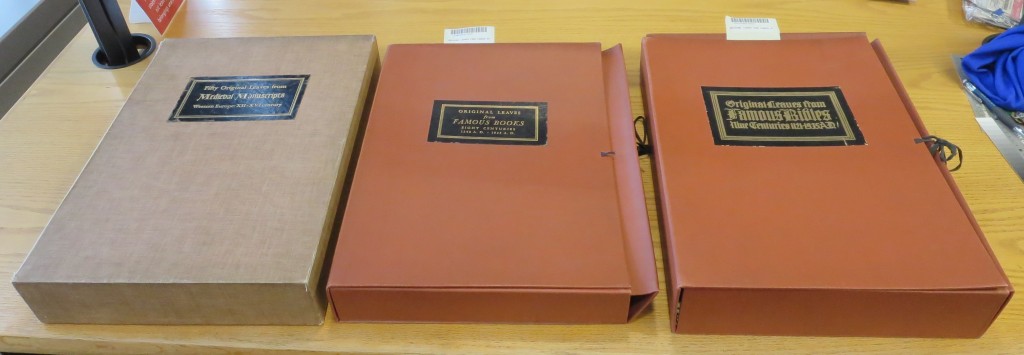
Three Ege Portfolios. “Fifty Original Leaves from Medieval Manuscripts”, “Original Leaves from Famous Books” (Series A in “Eight Centuries”), and “Original Leaves from Famous Bibles” (Series B in “Nine Centuries”). From the Collection of The Public Library of Cincinnati and Hamilton County. Photograph by Mildred Budny.
The Fifty Original Leaves Portfolio
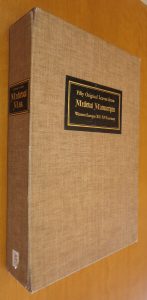
Beinecke Rare Book and Manuscript Library, Otto Ege Collection. Ege Family Portfolio (Set Number 3). Photography Mildred Budny.
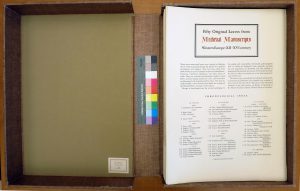
Beinecke Rare Book & Manuscript Library, Otto Ege Collection, FOL Set 3, with Case opened to Inside Front Cover and the Contents List. Photography Mildred Budny.
The leaf with part of Exodus (MS 35-14) belongs to the ‘unnumbered’ Set in Special Collections at Smith College of Ege’s monumental FOL Portfolio. This Set has the pressmark MS 35. It was presented to the College in 1956 by Louise Lange Ege (1892–1970), Smith College Class of 1917, at her fortieth class reunion and the fifth anniversary of her husband’s death.
Generally (as seen at left and right), these Portfolios come in a large-format clamshell box, which contain the fifty manuscript leaves separately enclosed in bifold windowed mats, preceded by a printed paper sheet with the frontispiece Contents List on its recto. Customarily the Sets themselves in the limited edition are numbered. The Set at Smith College presumably had a number originally, but, if so, it was not retained in the (re)mounting and reboxing of the leaves; nor is it mentioned in Library records.
On that set, its probable original number, and its alterations, see Scott Gwara, Otto Ege’s Manuscripts: A Study of Ege’s Manuscript Collections, Portfolios, and Retail Trade, with a Comprehensive Handlist of Manuscripts Collected or Sold (Cayce, South Carolina: De Brailes Publishing, 2013), Appendix VIII, p. 106 and n. 1, reporting in-house information supplied by Karen Kukil. To quote:
When [After?] this gift was received in April 1956, the set ‘was mounted in plastic, ready for exhibition purposes’. None of our correspondence with Mrs. Ege lists the set number. In the 1980s, our set was [re?]matted in double window mats with the printed explanatory texts mounted on the inside of the mats; these mats are now housed in five cloth-covered clam-shell cases. The number from the original case was not transferred to the new cases.
One might wonder what form of mounting “in plastic, ready for exhibition purposes”, was employed for the Portfolio or its parts, and whether that treatment was effected after reaching the College, or (perhaps less likely) beforehand, in preparation for its transfer. Apparently the original clamshell case and all Ege mats — if present (or still present) — were discarded when the choice was made in the 1980s to mat the leaves afresh. Had the discarded Ege mats been retained, they might show evidence of the assembly, reassembly, and transmission of the Portfolio, as in some other cases. See, for example,
- More Discoveries for ‘Otto Ege Manuscript 14’.
- A Leaf from ‘Otto Ege Manuscript 19’ and Ege’s Workshop Practices.
When the full span of the Set might become revealed for examination in its own right, say through photographs
, it could begin to be possible to assess the nature of the selected specimens and their embodiment of the FOL Portfolio which Louise Lange Ege deemed fitting to donate to her alma mater at a significant reunion of her class five years after Otto Ege’s death. In such a way, this Set at Smith College might take a clearer place among the surviving representatives of its genre as Portfolio. Its characteristics might, say, exhibit some preferred qualities (“best” examples) as shown in the “Ege Family Portfolio” preserved in the Otto Ege Collection, transferred by descendants to the Beinecke Rare Book & Manuscript Library.
The Famous Bibles Portfolio
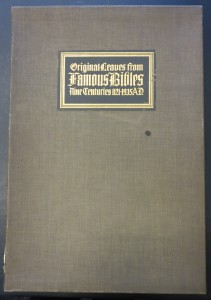
University of Pennsylvania Libraries, Special Collections, Portfolio Bible 1 (Catalogue ID 6035076), Album Front Cover. Photograph by Mildred Budny.
The Exekiel Leaf from Ege Manuscript 14 belongs to the exceptional, augmented Portfolio at Smith College of Ege’s Famous Bibles in Nine Centuries: Smith College Special Collections, MS 36. Earlier blogposts have examined aspects of Ege’s two series of Famous Books Portfolios, in Eight Centuries and in Nine Centuries (“Series ‘A’ and ‘B’ “). See, for example:
- More Discoveries for ‘Otto Ege Manuscript 61’
- Gwara, Otto Ege’s Manuscripts (2013), Appendices I–II (pages 95–99)
- “Handlist of Manuscripts and Fragments Collected or Sold by Otto F. Ege” assembled by Gwara, ibid., Appendix X (pages 113–201).
Although there was some exchange between which manuscripts served in the group of four or five specimens in the sets of these Portfolios, for example by interchanging one small-format Latin Vulgate Bible for another (as with Ege Manuscripts 5, 57a–b, and 58–61), including a specimen from the large-format Ege Manuscript 14 is (insofar as I know) unparalleled.
As Hannah Goeselt observed (in an email), this set of the Portfolio
has added material due to the way in which it was constructed, where Mrs. Ege sent in batches of leaves along with other donors, including Henry Latimer Seaver, and one rogue Ege MS 60 leaf [a Vulgate pocket Bible of “ca. 1240 A. D.” according to Ege] from Elizabeth Crofut. . . . The frontispiece . . . was annotated by Barbara Blumenthal to note which leaves from the actual series are present.
Correspondence between the donor and Library staff, including the Librarian, Margaret Louise Johnson (1902–1973), documents some stages in receiving, processing, and distributing the series of donations of leaves from manuscript and printed Bibles. A letter of 12 February 1958 to Mrs. Otto Ege describes some of them — including “a box to house the Bible leaves”.
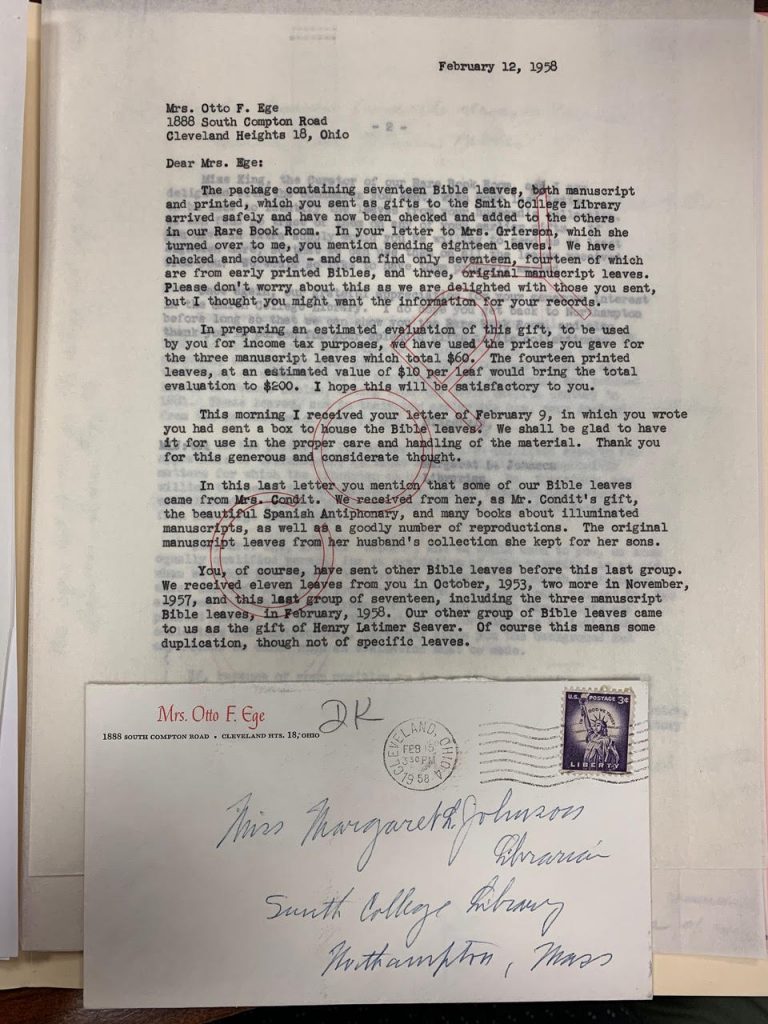
Smith College Special Collections, Correspondence with Mrs. Otto Ege, with her envelope. Photography by Hannah Goeselt.
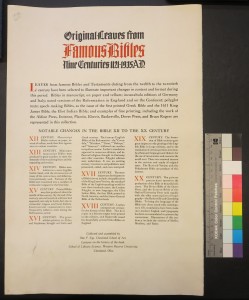
University of Pennsylvania Libraries, Special Collections, Portfolio Bible 1, Contents List. Photography Mildred Budny.
The Supplemented Contents
The Frontispiece Contents List (below) provides a summary, lists the different specimens according to groups chronologically, starting with manuscripts, reports the limited issue of the Portfolio in two Series (“A” and “B”), and provides a “SAMPLE” of the printed label for individual leaves. By its mention of the two Series and its presentation of the Sample Label, this version of the Contents List for the Famous Bibles in Nine Centuries differs from another version, as with the one at the University of Pennsylvania Libraries (right). See The Plot Thickens.
The Frontispiece Contents List at Smith College has multiple annotations in pencil, signed and dated by “B. Blumenthal June 2011”. They number the leaves, check off their presence, note who donated each one (as with E for Ege gift and S for Seaver gift), and add further information. Altogether, the contents total seventy leaves, against the standard sixty for the Famous Bibles in Nine Centuries. This Portfolio seems to have served as a catchment for various donations, by several donors, in gifts of manuscript or printed fragments of Biblical texts.
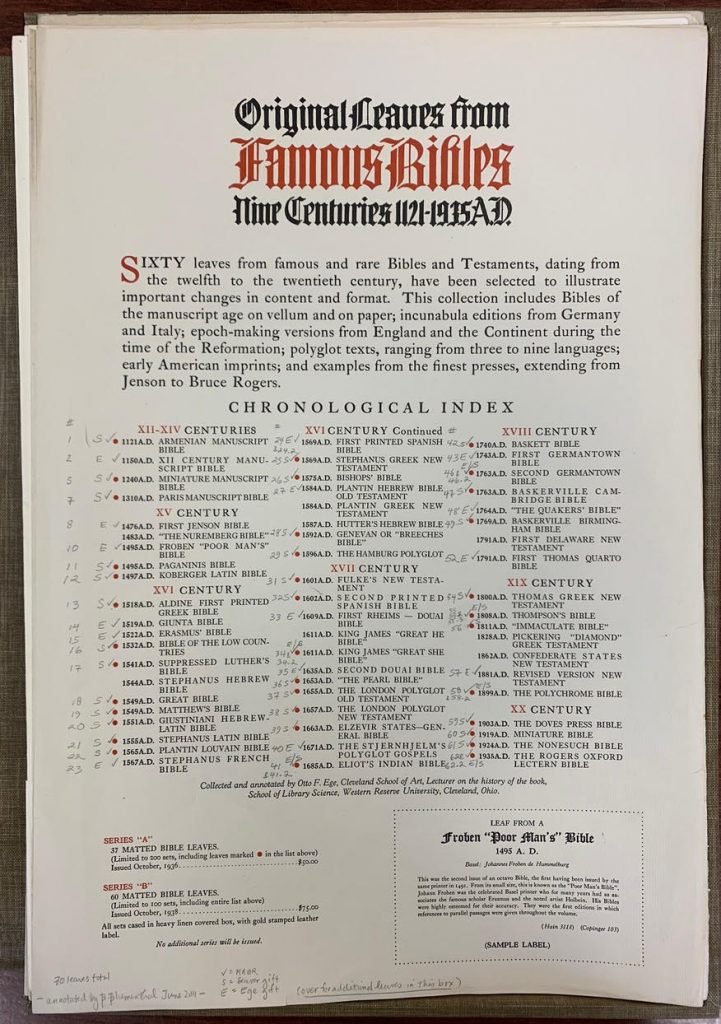
Smith College Special Collections, MS 42, Contents List. Portfolio of Original Leaves from Medieval Manuscripts. Photography by Hannah Goeselt.
The note at bottom center directs the reader to see “(over for additional leaves in this box)”. There, on the verso, would presumably be found the record for the large-format Bible Leaf from Ege Manuscript 14.
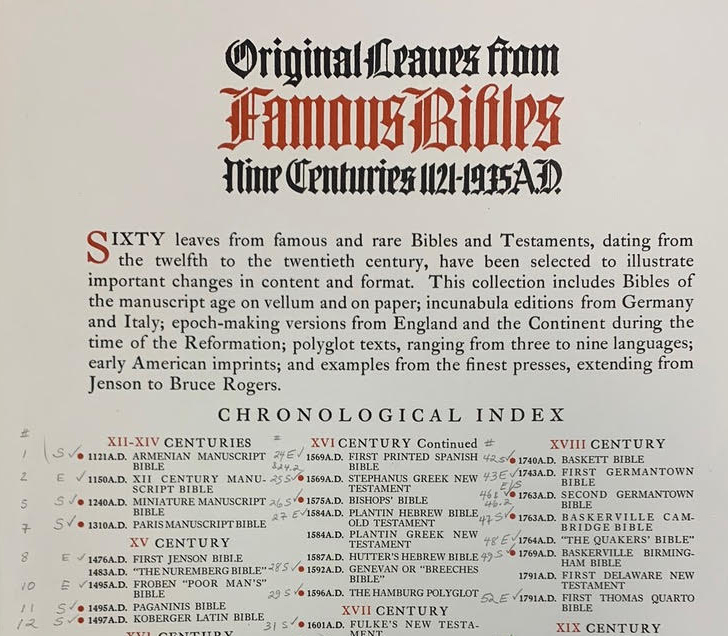
Smith College Special Collections, MS 42, Contents List. Portfolio of Original Leaves from Medieval Manuscripts. Photography by Hannah Goeselt.
Given its medieval date, its place in the sequence for the full augmented set would fall within the first group of “XII–XIV CENTURIES”, for which the pencil numbers 1, 2, 5, and 7 assigned to the four manuscript specimens of the printed list allow for the omitted numbers 3, 4, and 6 to find their place overleaf. We might suppose that the description for the leaf from Ege MS 14 would follow Ege’s standard summary for it: “1300 A. D. France. Vulgate Bible”. Given the dates which the printed list assigns to its four manuscript specimens in the group — 1121, 1150, 1240, and 1310 A. D. — this specimen could qualify as supplemental number 6. Access to the verso of the Contents List or an image of it would tell the story.
The Label for Ege’s Number 14
Replacing Ege’s original mat, the current mat for the Exodus Leaf (MS 35-14) retains Ege’s printed label for his Leaf Number 14. Customarily the Label stands at the lower left on the front of the mat, and wraps around it with a narrow stub pasted to the back. For example, in Set 1 of the FOL Portfolio (see also Fifty Original Leaves):
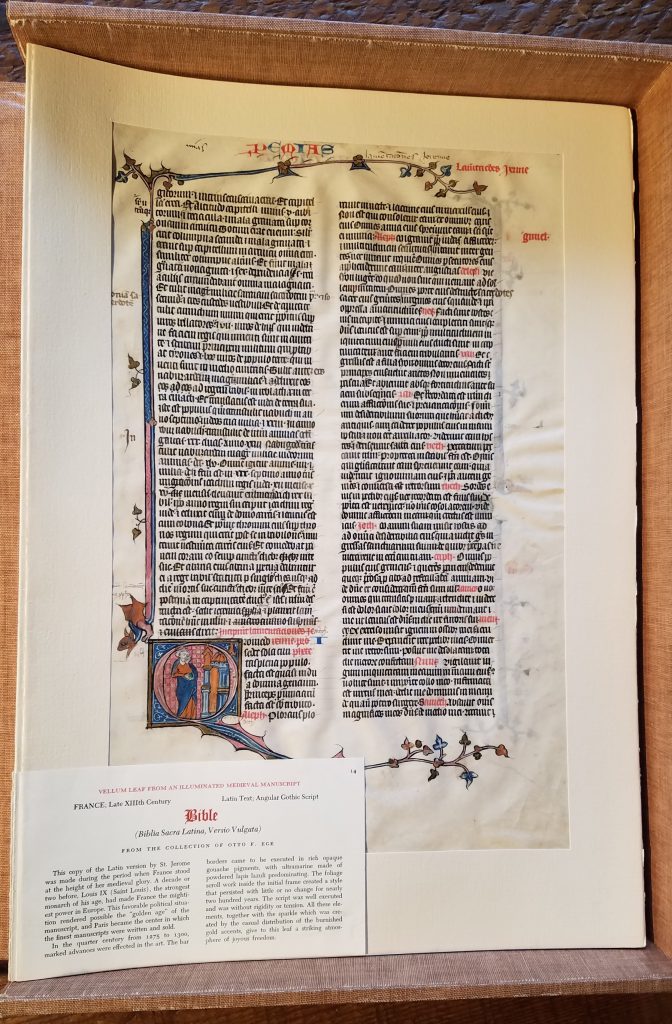
Leaf 14 in its Mat, seen from the front, with Label, in Set 1 of Otto Ege’s FOL Portfolio.
Unusually for the specimens which retain their Ege Mats, or parts of them, and their Ege Labels, the Label with the Smith College Exodus Leaf has been trimmed and bisected. A horizontal cut across its rectangular strip of paper separates the heading in a broad single column (“VELLUM LEAF FROM AN ILLUMINATED MEDIEVAL MANUSCRIPT”, etc.) from the double columns of the description (“This copy of the Latin version by St. Jerome . . .”).

Smith College Special Collections, MS 35-14, Mat and Ege Label, from ‘Otto Ege MS 14’. Photography by Hannah Goeselt.
Moreover, the left-hand margin was cut down to remove the folded stub which normally wrapped around the bifold mat to a pasted position at the back. This vertical trimming appears to have had two stages, whereby the margin for the heading strip is narrower than that for the main text.
Repositioning a Label which traveled with the Leaf occurred with some other leaves, as with the Dallas Leaf, as described in our blogpost on A Leaf in Dallas from ‘Otto Ege Manuscript 14’. In this case, the partly trimmed Label is attached to the back of the present frame, along with a horizontal strip from the Ege Mat.
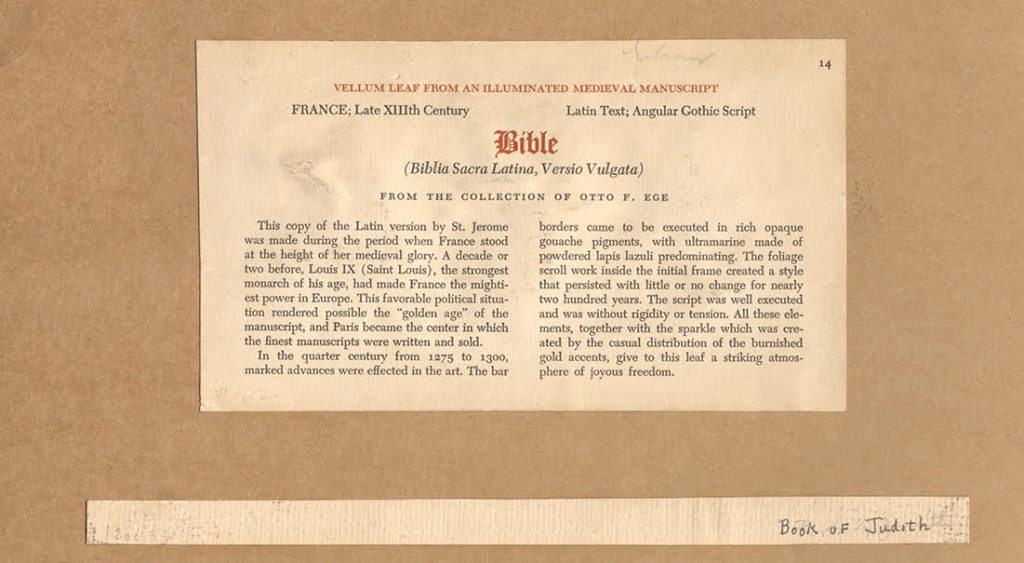
Virginia Lazenby O’Hara Fine Books Division, Dallas Public Library, Framed Leaf from Otto Ege Manuscript 14, Back of Frame with Ege’s Printed Label and Strip of Former Mat.
Leaf 1 (Exodus): Smith College MS 35-14
Exodus 25:31 (procedentia) – 28:21 (cela-[/buntur singuli])
Ege’s ‘Verso’, originally the Recto (Feria V)
In this photograph, the show-through at the bottom from the text of the Label (see above) and the mounting tapes at the right-hand side demonstrate the position which Ege’s mat imposed upon the Leaf, turning its original Recto to the back. Note the modern entry in pencil at the lower left on the leaf, recording the arabic number “30” in some series or other.
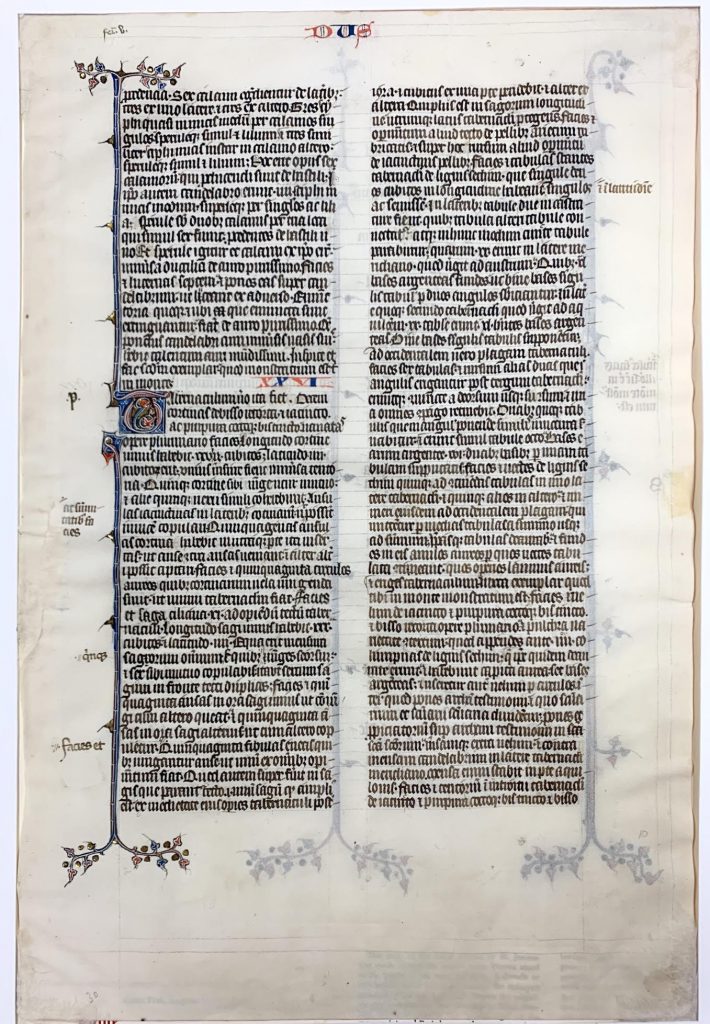
Smith College Special Collections, MS 35-14, recto, from ‘Otto Ege MS 14’. Photography by Hannah Goeselt.
Ege’s ‘Recto’, originally the Verso
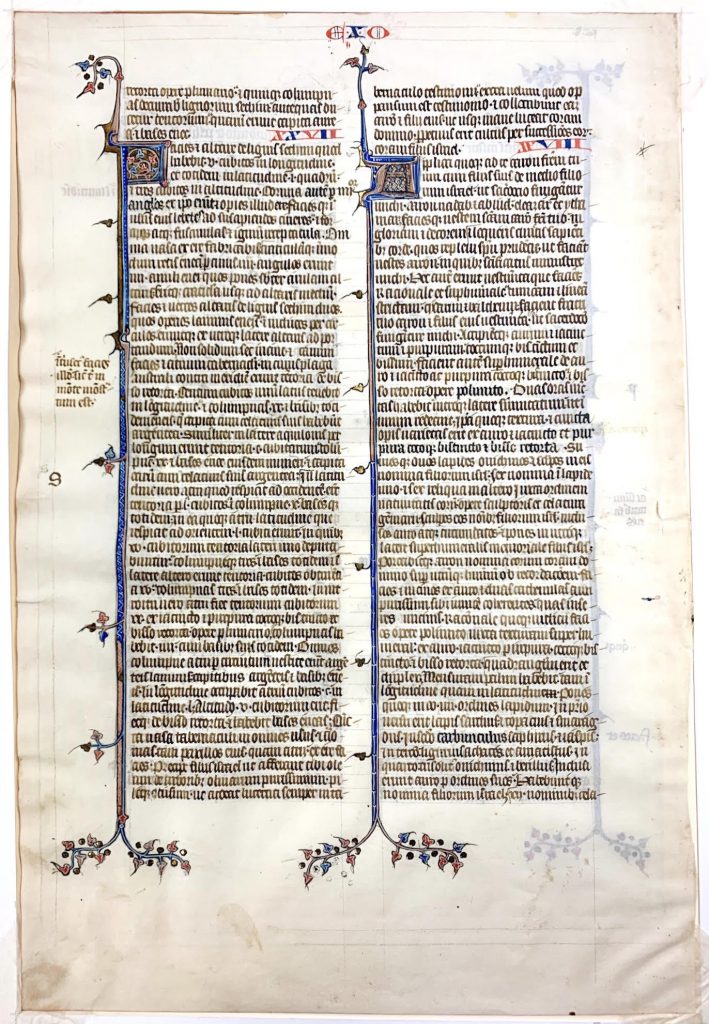
Smith College Special Collections, MS 35-14, verso, from ‘Otto Ege MS 14’. Photography by Hannah Goeselt.
This leaf carries the text of Exodus from Chapters 25:31 (procedentia) – 28:21 (cela-[/buntur singuli]). It begins mid-verse on the recto and breaks off both mid-verse and mid-word on the verso. Within its course, the text moves from chapter to chapter with marked transitions enhanced by enlarged and decorated initials. As in other parts of the manuscript, these initials (or their bodies) occupy block-like frames inset within the indented three first lines of the chapter text.
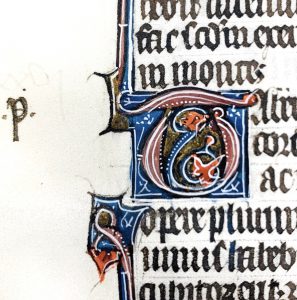
Smith College Special Collections, MS 35-14, recto, initial T of Exodus 26. Photography by Hannah Goeselt.
The leaf carries the initials T of tabernaculum (26:1), F of Facies (27:1), and A of Adplica (28:1). Their bodies or bows contain varieties of ornament: zoomorphic (T), foliate (F), and geometric (A).
To the left from these frames, bar-like vertical bands extend alongside of the column of text and reach into the upper and lower margins, where they branch into foliate stems. On the verso, the bars extend from both top and bottom left of the initial or its frame. On the recto, the bar rises only from the top of the frame, but introduces a gap between itself and the bottom. (Such gaps are known in other parts of the manuscript.)
The bars contain frieze-like decorative patterns of several kinds. Along their vertical course, the bars have short foliate offshoots. On the verso, they comprise ivy-like leaves; on the recto, they resemble thorn-like outgrowths.
The chapter numerals stand at the ends of the lines which close the previous chapters. On this leaf, they are XXVI, XXVII, and XXVIII. Written in Gothic Capitals in letters which alternate between red and blue pigments, like the running title at the top of each page. The alternation mostly moves from color to color between each element of the numeral, apart from the double Xs of XXVIII, which share the same red color.
The running title spreads the short name of the Book into two parts across an opening, with EXO– on the verso and –DUS on the recto. The bichrome title adds a pair of vertical hair-strokes to the internal portion of the letter, in the contrasting color, so that, for example, the red D has blue verticals within its bow, and the red S has a disjointed pair of blue verticals, which part their course for the more-or-less horizontal ‘waist’ of the letter.
Up close
The recto has an annotation in ink at top left, entered within the pair of horizontal rulings drawn for the running title. Pertaining to a series, this note cites the location of the text within the series of liturgical lections, here intended for feria V. On this series, see, for example:
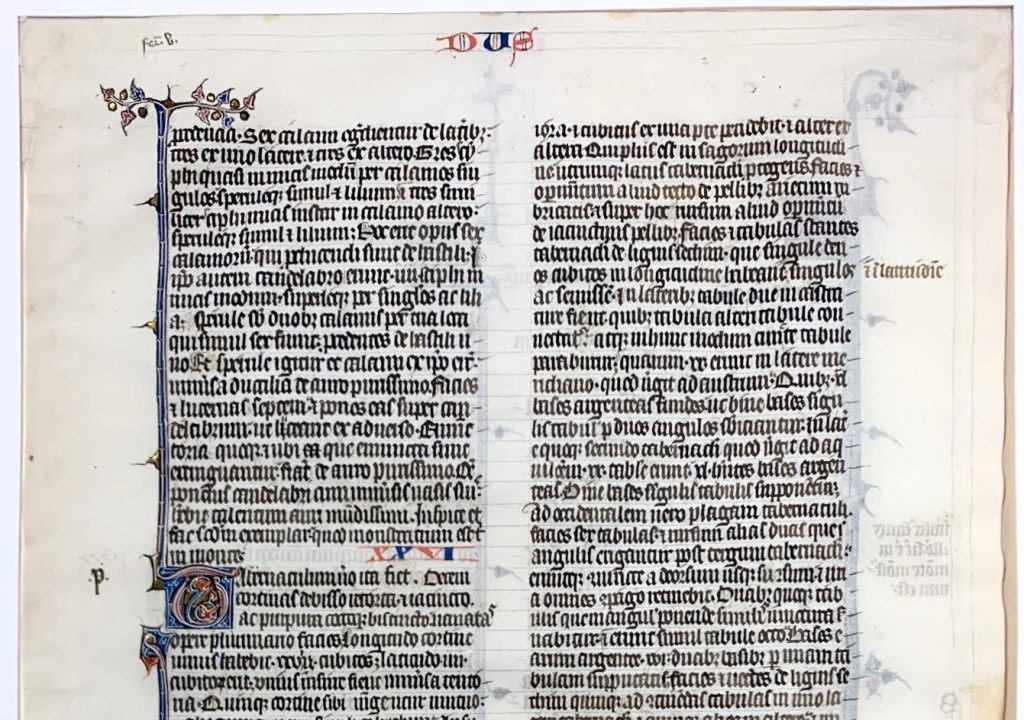
Smith College Special Collections, MS 35-14, recto, top, from ‘Otto Ege MS 14’. Photography by Hannah Goeselt.
Leaf 2 (Exekiel): Smith College MS 36-6
Recto
Ezekiel 16:43 ([irascar amplius /] eo quod) – 17:14 (sic reg/-num humile et])
This leaf carries the decorated initials and bar borders for Chapters XVII (Et factum) and XVII (Et factus), with one per side of the leaf. Both initials contain foliate motifs.
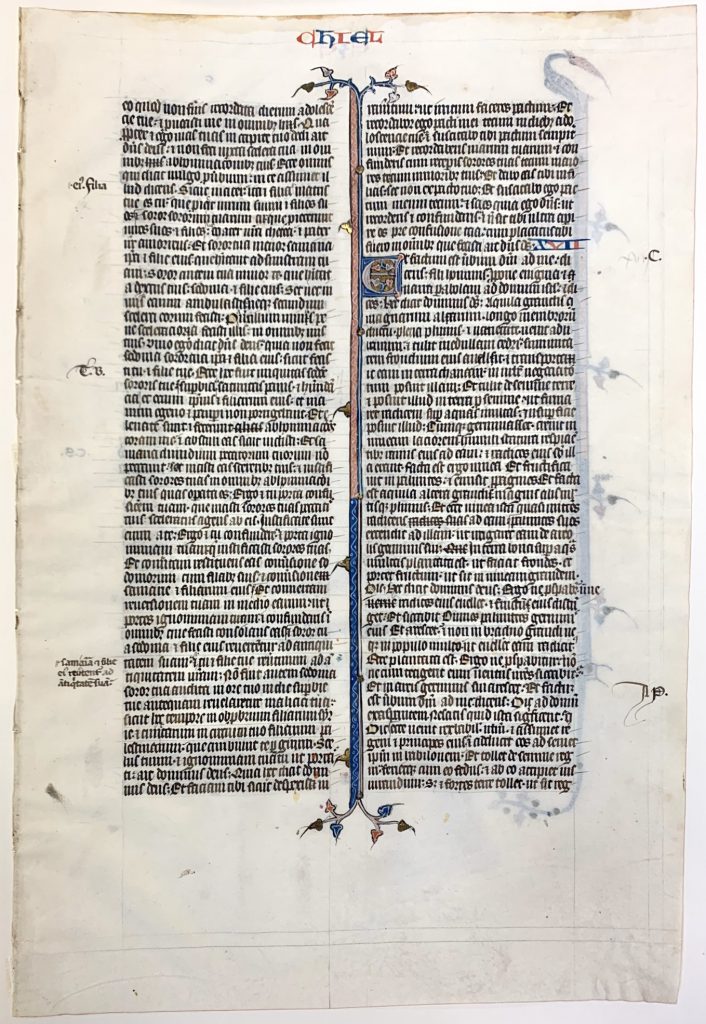
Smith College Special Collections, MS 36-6, recto, from ‘Otto Ege MS 14’. Photography by Hannah Goeselt.
Verso
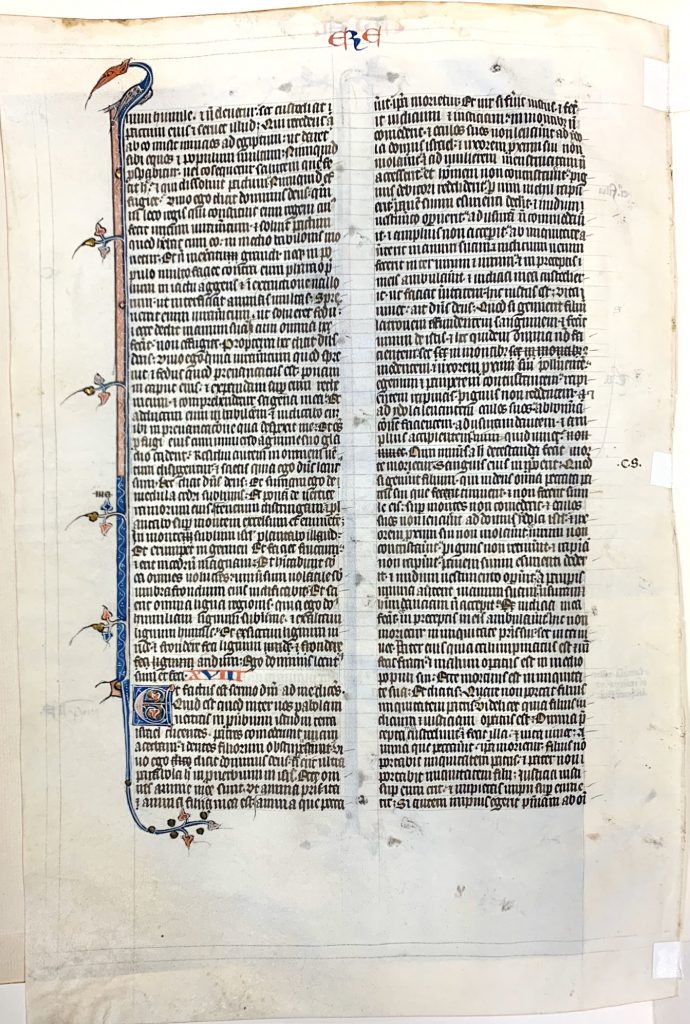
Smith College Special Collections, MS 36-6, verso, from ‘Otto Ege MS 14’. Photography by Hannah Goeselt.
Up Close
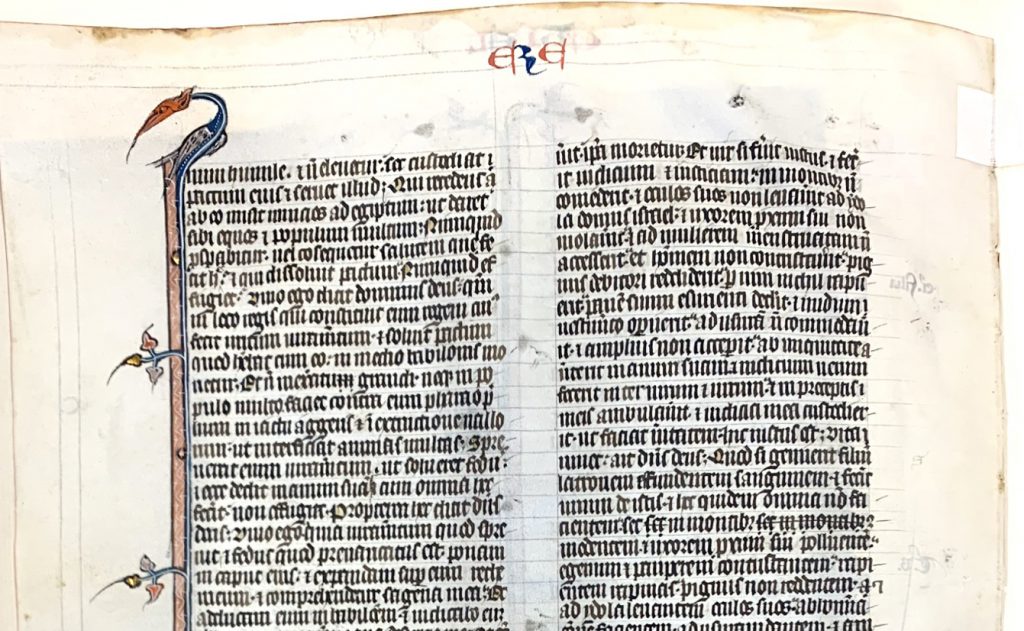
Smith College Special Collections, MS 36-6, verso, top, from ‘Otto Ege MS 14’. Photography by Hannah Goeselt.
Head’s Up
A close look shows the granular texture of the ruled lines; the layering of strokes of pigment on the bird’s head, neck, and body; and some hair follicles of the animal skin.
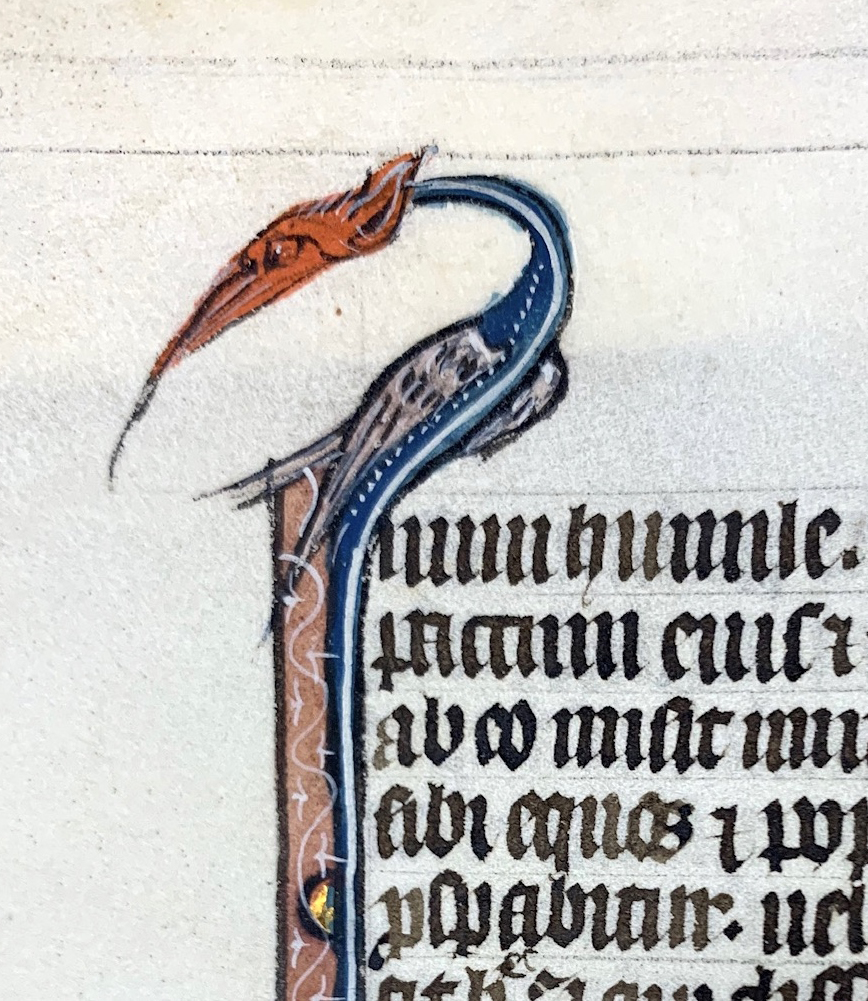
Smith College Special Collections, MS 36-6, verso, top left, from ‘Otto Ege MS 14’. Photography by Hannah Goeselt.
Virtual Reconstruction of the Manuscript, Continued
The Smith College Leaves contribute to the process of reconstructing the original state of Ege MS 14, for two of its Old Testament Books. Those portions in the preliminary Reconstruction shown in More Discoveries for ‘Otto Ege Manuscript 14’ can be updated, as shown here in additions in red.
1) Exodus
Location unknown: Rogue Leaf (2 of 2 from the Esther Rosenbaum Collection)
Sotheby’s, Catalogue of Single Leaves and Miniatures from Western Illuminated Manuscripts, 25 April 1983,
lot 83(b), with plate from the upper part of one side (unspecified)
- including the Prologue to Exodus and the opening of Exodus 1 with historiated initial
Rogue Leaf (3 of 3) sold by Bruce P. Ferreni, Catalogue One: Important Western Medieval Illuminated Manuscripts & Illuminated Leaves (1987), number 27 (page 44), without plate
— Identified, without citing the span of text, as having been “bought by Berés. Photos at the Conway Library, Courtauld Institute of Art.” (Peter Kidd, The McCarthy Collection, Volume III: French Miniatures (London: Ad Illissvm, 2021), no. 60, pp. 199-202, at pp. 201–202 note 5.)
Location unknown:
- Exodus from the Berés Leaf, opening the Book (precise span unknown), to 25:31 (ex ipso)
Rogue Leaf? Northampton, Massachusetts, Smith College MS 35-14
- Exodus 25:31 (procedentia) – 28:21 (cela-[/buntur singuli])
Location unknown:
- Exodus 28:21 ([cela-]buntur singuli) – 40:38
2) Ezekiel
Rogue Leaves. Cleveland Museum of Art, Bifolium with non-consecutive leaves (Leaf 1 + Leaf 2)
- Leaf 1, recto? [contents unknown]
Leaf 1, verso. End of Baruch 6: 6:61 ([perficiunt quod /] imperatum est),
Jerome’s Prologue to Ezekiel,
Ezekiel 1.1 – 13 (et quasi aspec-[/tus lampadarum]) on verso
[= folio *308v]
Location unknown:
Leaves between Ezekiel 1:13 ([aspec-/]tus lampadarum) and Ezekiel 8:2 (et ecce [/ similitudo quasi])]
- Leaf 2, recto. Ezekiel 8:2 ([et ecce /] similitudo quasi) – 9:9 (habebat attramentarium [/ in dorso])
on the verso?
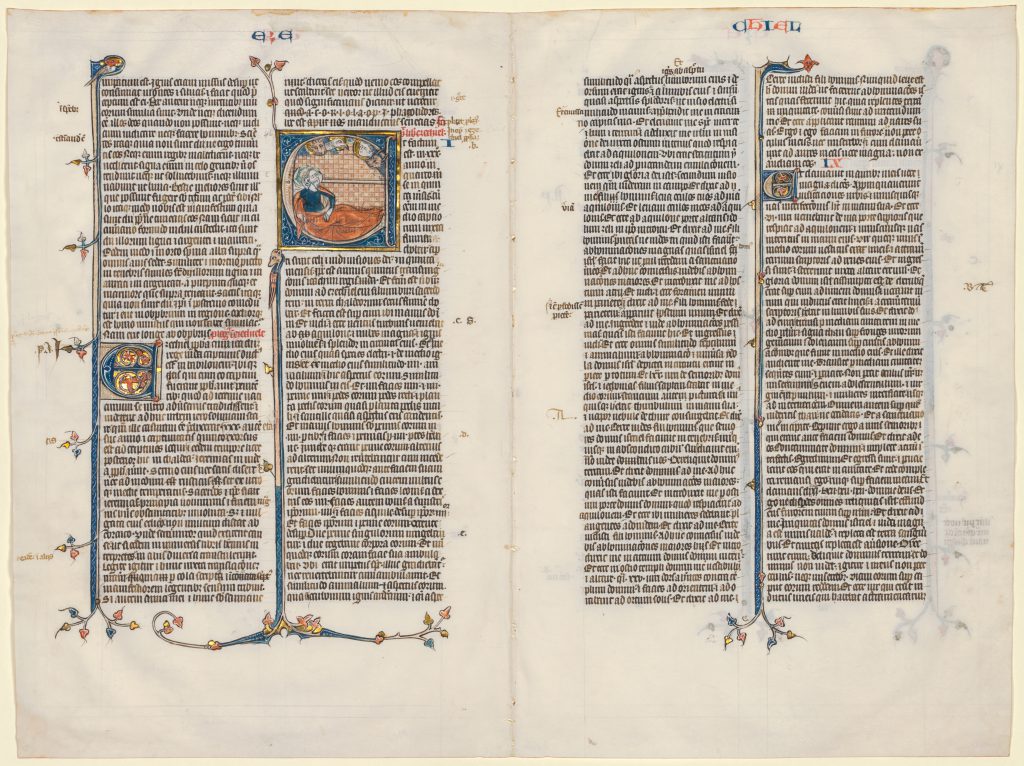
Cleveland Museum of Art, Bifolium from a Bible: (Ege MS 14), with parts of Ezekiel,via https://clevelandart.org. /art/1959.271. Image Public Domain via Creative Commons..
Rogue Leaf? Northampton, Massachusetts, Smith College MS 36-6
- Ezekiel 16:43 ([irascar amplius /] eo quod) – 17:14 (sic reg/-num humile et])
FOL Set 35. Rochester Institute of Technology
- Ezekiel 18:21 – 20:11 (recto).
verso: ‘A scan of the verso is not currently available.’
FOL Set 38. University of North Carolina at Greensboro
- Ezekiel 24:25 ([et di-/]siderium oculorum eorum) – 27:30 (et clamabunt [/ et superiacient])
— These 2 leaves are consecutive
FOL Set 37. Case Western Reserve
- Ezekiel 27:30 ([clamabunt /] amare) – 30:20 (in un-[/decimo])
FOL Set 32. University of Colorado at Boulder, recto and verso
- Ezekiel 33:31 ([ingrediatur popu-/]ulus meus) – 35:3 (meam [ / super te])
Location unknown
- Ezekiel 35:3 (super te) – 48:35
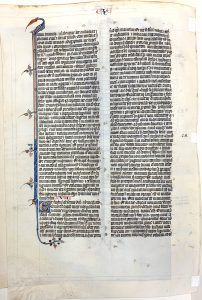
Smith College Special Collections, MS 36-6, verso. Photography by Hannah Goeselt.
*****
We thank Hannah Goeselt for bringing these leaves to our attention, sharing the photographs, and allowing their reproduction here. We thank Shannon Supple and Kate Long of Smith College Special Collections for information about the online library catalogue entries and permission to reproduce the photographs from the collections.
Do you know of more leaves from this manuscript? Do you recognize the hands of these scribes, artists, and annotators in other manuscripts?
You might reach us via Contact Us or our Facebook Page. Comments here are welcome too. We look forward to hearing from you.
Watch our blog on Manuscript Studies for more discoveries. Please visit its Contents List.
Coming soon: “More Discoveries for ‘Otto Ege Manuscript 40’ (Part IV of ‘III’)”.
*****
